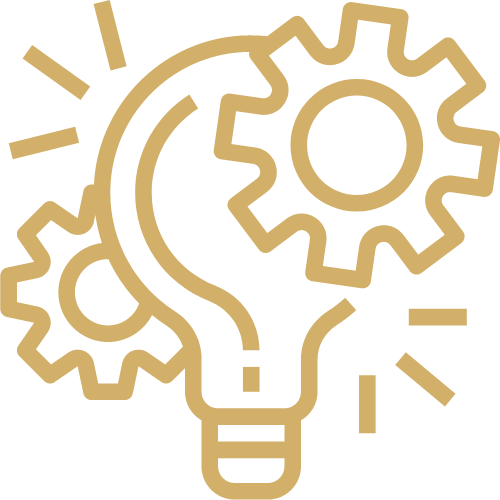How to Close Any Asphalt Sale with Professional Proposals | AK Dash
Win more asphalt jobs with smarter proposals. Use the tips below to land clients and grow revenue.
Posted by
Judson Burdon
on July 8

Great work alone won’t close every job. Many strong crews lose bids because their proposals don’t show the same care as their paving.
A sharp proposal builds trust, sets clear expectations, and moves the deal forward. With a simple approach and the right tools, the process is quick and repeatable.
Whether you are new to bidding or seasoned, this guide shows how to present your offer with confidence and close asphalt work consistently.
Why Professional Proposals Matter for Asphalt Jobs
Prospects judge you before you ever roll a truck. A clean, detailed proposal helps them say yes.
Building Trust and Credibility
A clear scope, price, and timeline signal reliability. Clients can see exactly what they are buying, which reduces misunderstandings
Staying Organized and Competitive
A standard format keeps key items—scope of work, materials, schedule, and terms—in one place. It proves you run a tight operation and makes comparisons easy for the buyer..
Avoiding Mistakes and Staying Accurate
Templates reduce missed line items and bad math. Consistency protects margin and keeps service levels high.
TIP: Following these steps doesn’t just look good to the client — it actually makes your own processes better, improving your business from the inside out. By putting these elements into your proposal process, you can boost your ability to close sales and grow your business consistently.
First Start Here: The CLOSER Framework Adapted for Asphalt Contractors
To close more sales and make more money, using a structured approach like the CLOSER framework can be a game-changer. We adapted Alex Hormozi’s version of the CLOSER Framework to be tailored exactly for asphalt contractors — so before you even start writing your proposal, run through this framework to help you create a thorough and compelling proposal.
Here’s how it works:
The CLOSER Framework
Step |
Description |
Explanation |
|---|---|---|
C |
Clarify |
Understand the client's needs and repeat them during the presentation. |
L |
Label |
Identify and clearly state the client's problem, then highlight it during the presentation. |
O |
Overview |
Discuss past issues and show how your proposal offers a better solution. |
S |
Sell the Vacation |
Present your solution and clearly show the benefits. |
E |
Explain |
Address any potential concerns and ask if there are any objections. |
R |
Reinforce |
Summarize the benefits and reinforce their decision to choose your services. |
- C - Clarify Why They Are There
- Before: Ask why they called, what’s wrong now, and what “done” looks like.
- During: Repeat their goals in plain words to show you heard them.
- L - Label the Problem
- Before: State the core problem (e.g., failing edges, drainage, trip hazards).
- During: Call it out again so the fix feels urgent and specific.
- O - Overview Their Past Pain
- Before: Note past pain—missed timelines, messy sites, short-lived patches.
- During: Contrast that history with how your plan avoids it.
- S - Sell the Vacation
- Before: Map your solution to outcomes: safer lot, longer life, lower lifetime cost.
- During: Walk benefits, not only tasks. Tie each step to an
- E - Explain Away Their Concerns
- Before: List likely objections—price, schedule, traffic control, warranty. Prepare answers.
- During: Ask for concerns directly and resolve them on the spot.
- R - Reinforce Their Decision
- Before: Plan a quick recap of results, timeline, and next step.
- During: Sum up wins, confirm start details, and ask for the go-ahead.
Using this framework before and during your proposal presentation covers every aspect of the client’s needs and concerns. This makes your proposal not just a document, but a comprehensive solution personalized to their exact situation.
The Tools You Need for a Presentation That Closes Asphalt Deals
Creating strong proposals gets easier with the right system. AK DASH’s Proposal Generator Engine streamlines the work so you look sharp and respond fast.
Ready-Made Templates
Start from contractor-tested layouts for driveways, private roads, and parking lots. Customize once, reuse often for speed and consistency.
Customizable Branding
Apply logo, colors, and typography in a few clicks so every document matches your brand—no designer required.
Multi-Property Management
Quote and organize work across several sites in one account. Ideal for portfolios and repeat clients.
Automatic Calculations and Scope of Work
Let the system total square footage, rates, and discounts. Use pre-built scopes or tailor your own for accuracy and clarity.
Integrating Photos and PASER Assessments
Drop in site photos and scores from your Pavement Assessments. Visuals make issues obvious and help buyers decide faster.
Seamless Sending and E-Signatures
Preview, export to PDF, or send a link from the Proposal Generator. Built-in e-signatures speed approvals and keep everything in one place.
Bottom line: pair a solid framework with tools that remove friction and you shorten the path to “approved.”
Step-by-Step Guide to Using AK DASH’s Proposal Generator Engine
Here is a quick workflow to build a clean, persuasive proposal with AK DASH.
Step 1: Getting Started with the Proposal Generator Engine
Sign Up and Setup:
Create a free AK DASH account and complete the quick setup.
Use the Lead Generation Feature:
Enter prospect details via AK DASH Lead Generation so contacts and history flow into the proposal.
Choose a Template:
Pick the layout that fits the job size and surface type.
Step 2: Customizing Your Proposal
Add Company Branding:
Apply your logo and styles for a consistent look.
Enter Client and Project Details:
Pull data from the lead record to avoid retyping.
Step 3: Detailing the Scope of Work
Scope of Work:
List tasks, materials, and traffic control. Use a pre-built scope and adjust to fit the site.
Automatic Calculations:
Let AK DASH compute footage, line items, and totals—including any discounts.
Step 4: Enhancing the Proposal with Visuals
Upload Photos and Assessments:
Include site images and PASER notes from your assessment so the problem and remedy are clear.
Step 5: Finalizing and Sending the Proposal
Preview and Adjust:
Check numbers, dates, and inclusions.
Seamless Sending:
Share as a link or PDF from the Proposal Generator for a clean client experience.
Step 6: Securing the Deal
E-Signatures:
Use the built-in e-signature feature to get contracts signed quickly — seal that deal baby!
Where to Next With AK DASH
Confident closes start with a professional proposal. Clear scopes reduce errors, speed approvals, and lift win rates.
Try the tool that makes it simple: AK DASH Proposal Generator Engine. Build a few proposals and see how fast you can move from site visit to signed work.
Not ready to commit. Join our FREE weekly Roundtables to learn with other asphalt contractors: sign up here.
Frequently Asked Questions
1. How can a professional proposal help close more sales?
It turns scope, schedule, and price into a clear plan. Clients see exactly what you will do and when, which builds trust and lowers risk—so approvals come faster.
2. What is the CLOSER framework and how does it help in creating proposals?
It is a step-by-step way to match your offer to the client’s pain. You clarify needs, highlight problems, present outcomes, handle objections, and lock in the decision.
3. How does AK Dash’s Proposal Generator Engine improve the proposal process?
Templates, branding controls, automatic math, photo/assessment inserts, and e-signatures remove busywork. You send polished proposals in minutes, not hours.
4. What features should an asphalt contractor look for in a proposal generator tool?
Customizable templates, accurate calculations, multi-property support, photo integration, and e-signatures. These save time and keep bids consistent.
5. How do professional proposals impact the profitability of an asphalt contracting business?
Higher close rates, fewer mistakes, and a stronger reputation. That means more signed work at healthy margins and better lifetime value per client.







.jpg?width=352&name=feature%20(2).jpg)